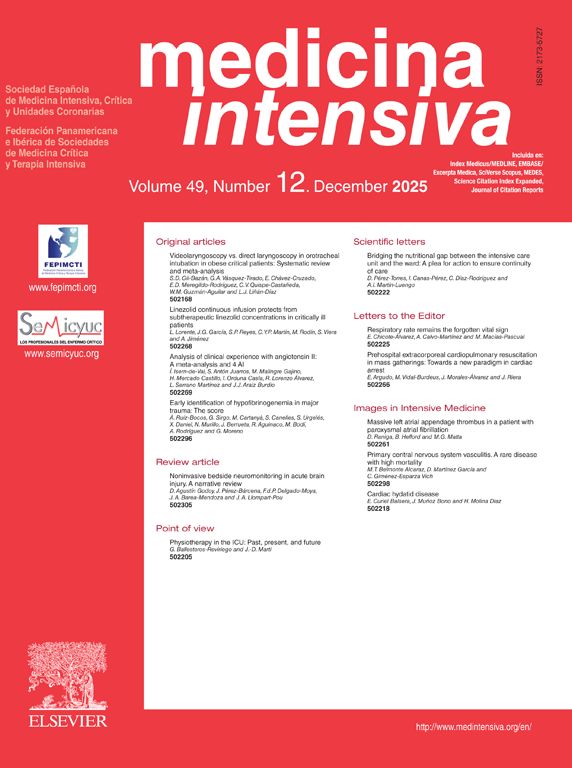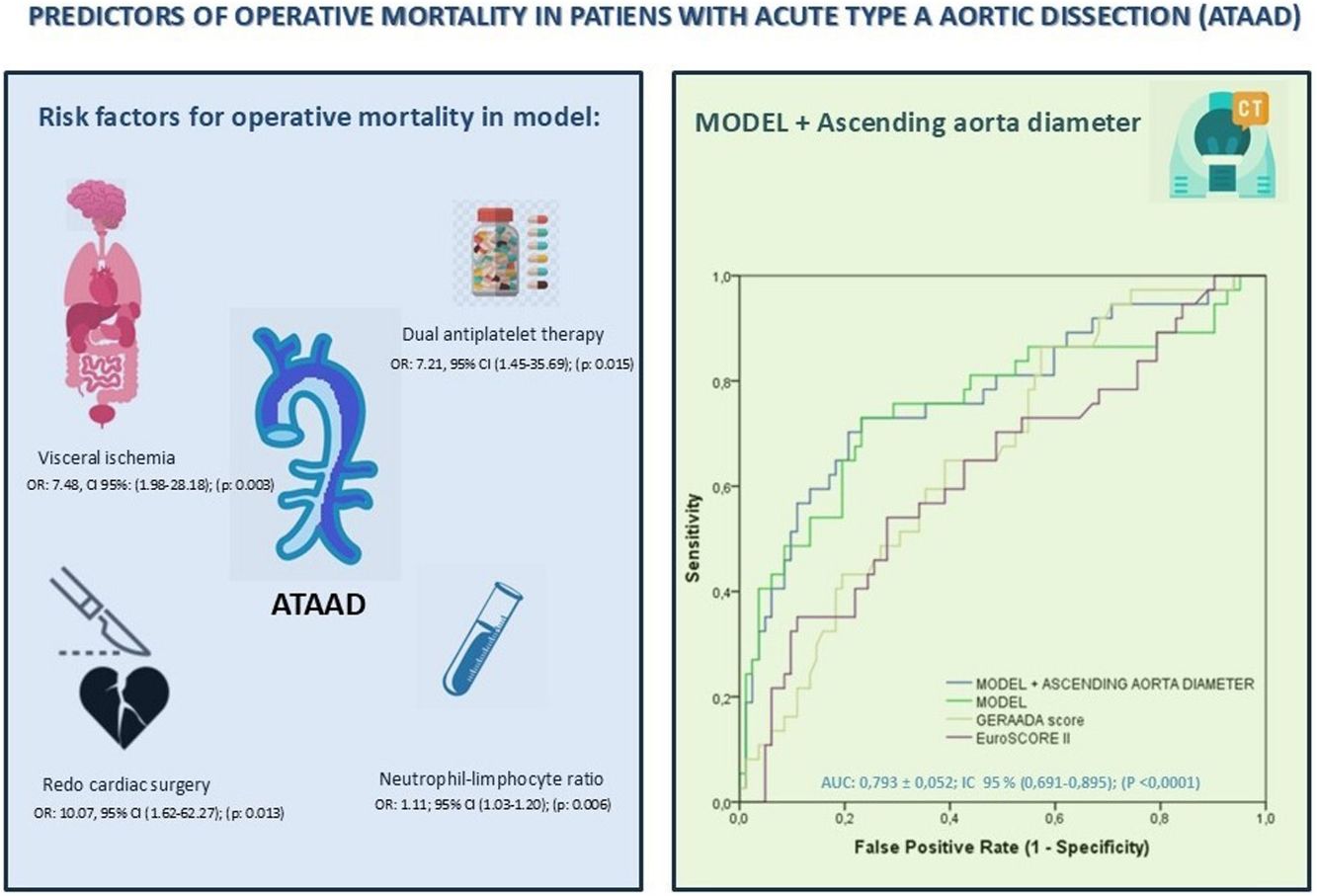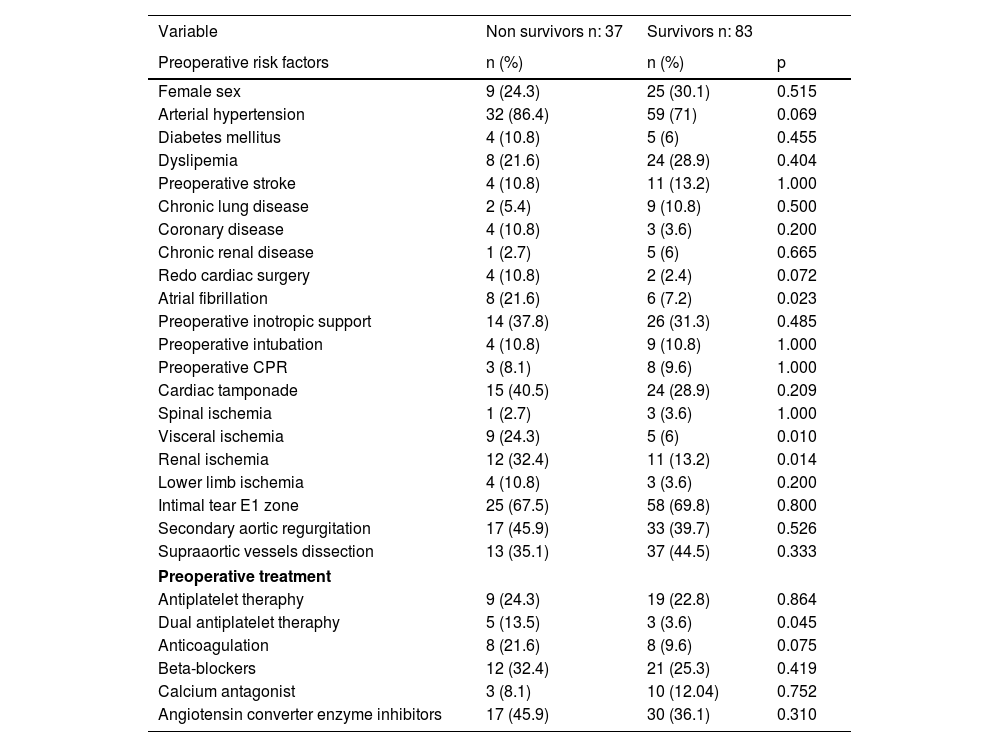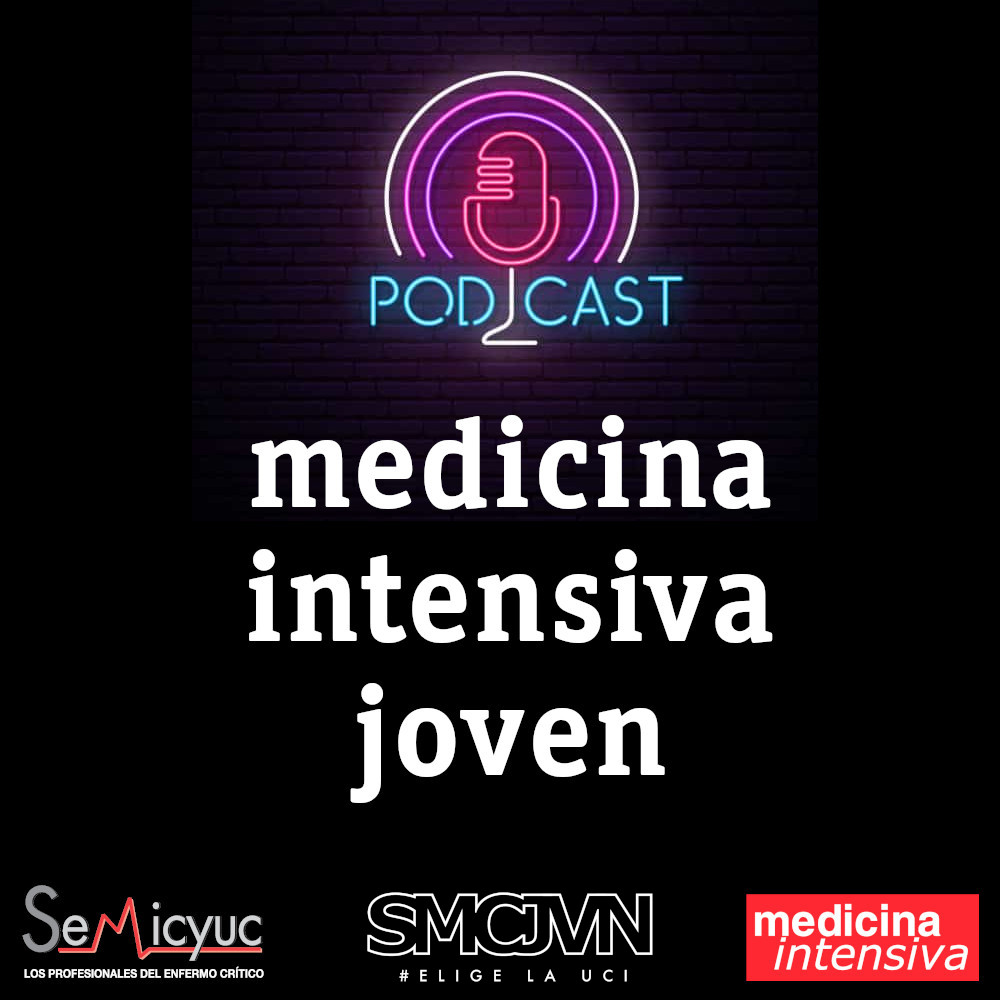To develop a model capable of predicting risk factors for operative in-hospital mortality in patients diagnosed with acute type A aortic dissection, that includes inflammatory biomarkers and imaging variables of the ascending aorta in the acute phase.
DesignUnicentric retrospective analysis.
SettingCardiac surgery unit.
PatientsAdult patients undergoing cardiac surgery after acute type A aortic dissection, during a 11-year period.
Main variables of interestPre- and intraoperative risk factors for mortality, inflammatory markers and ascending aortic diameter, at the time of diagnosis.
Results120 patients were analysed. The presence of preoperative visceral ischemia (OR) 7.48, 95% confidence interval (CI) (1.98−28.18); (p: 0.003); redo cardiac surgery (OR: 10.07, 95% CI (1.62−62.27); (p: 0.013); preoperative dual antiplatelet therapy (OR: 7.21, 95% CI (1.45–35.69); (p: 0.015) and the neutrophil/lymphocyte ratio (OR: 1.11; 95% CI (1.03−1.20); (p: 0.006) were independent predictors for operative mortality in the analysed sample. These risk factors were included in a model to predict operative mortality, which also included ascending aortic diameter, with an area under the ROC curve of 0,793 ± 0,052; IC 95% (0,691–0,895); (P < 0,0001).
ConclusionsThe inclusion of variables that quantify inflammatory activity, as well as imaging variables at the time of diagnosis of acute type A aortic dissection, may contribute to a more accurate estimate of surgical risk.
Elaborar un modelo para predecir los factores de riesgo de mortalidad operatoria hospitalaria en pacientes diagnosticados de disección aórtica aguda tipo A, que incluya marcadores de inflamación y variables de imagen de la aorta ascendente en el momento agudo.
DiseñoUnicentrico, análisis retrospectivo.
ÁmbitoServicio de cirugía cardiaca.
PacientesAdultos sometidos a cirugía cardiaca tras disección aórtica aguda tipo A, durante un periodo de 11 años.
Variables de interés principalesFactores de riesgo de mortalidad pre e intraoperatorios, marcadores de inflamación y diámetro de aorta ascendente, en el momento del diagnóstico.
ResultadosSe analizaron 120 pacientes. La presencia de isquemia visceral preoperatoria Odds Ratio (OR) 7,48, intervalo de confianza (IC) al 95% (1,98-28,18); (p: 0,003); el antecedente de cirugía cardiaca previa OR: 10,07 IC 95% (1,62-62,27); (p: 0,013); la doble antiagregación preoperatoria OR: 7,21; IC 95% (1,45-35,69); (p: 0,015) y el índice neutrófilo/linfocitario OR: 1,11; IC 95% (1,03-1,20); (p: 0,006) fueron predictores independientes de mortalidad operatoria en la muestra analizada. Estos factores de riesgo se incluyeron en un modelo para predecir la mortalidad operatoria al que, además, se añadió el diámetro de la aorta ascendente, con un área bajo la curva ROC de 0,793 ± 0,052; IC 95 % (0,691-0,895); (P < 0,0001).
ConclusionesLa inclusión de variables que cuantifiquen la actividad inflamatoria, así como variables de imagen en el momento del diagnóstico de la disección aórtica aguda de tipo A pueden ayudar a una estimación más ajustada del riesgo quirúrgico.
Article
Go to the members area of the website of the SEMICYUC (www.semicyuc.org )and click the link to the magazine.













